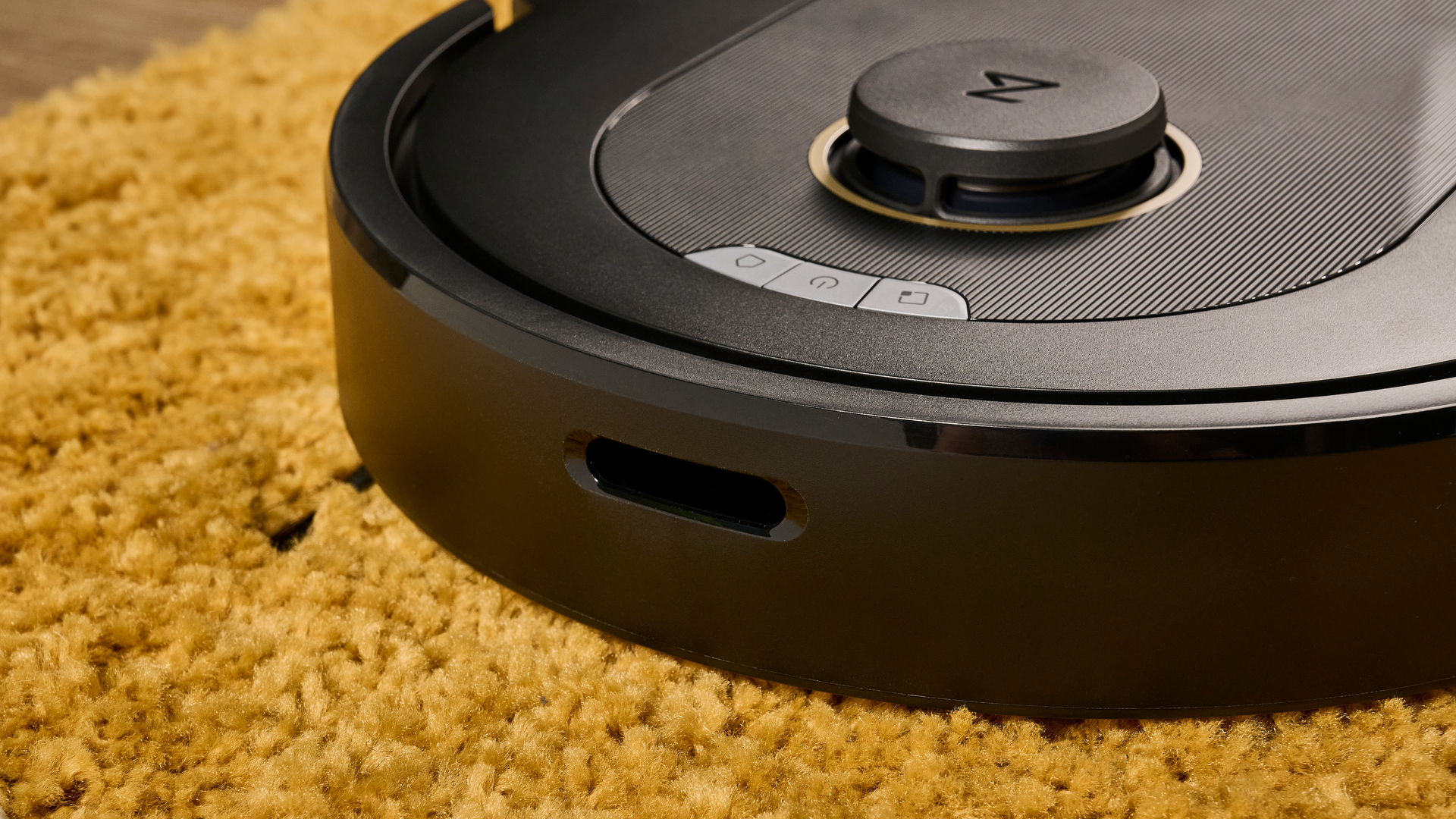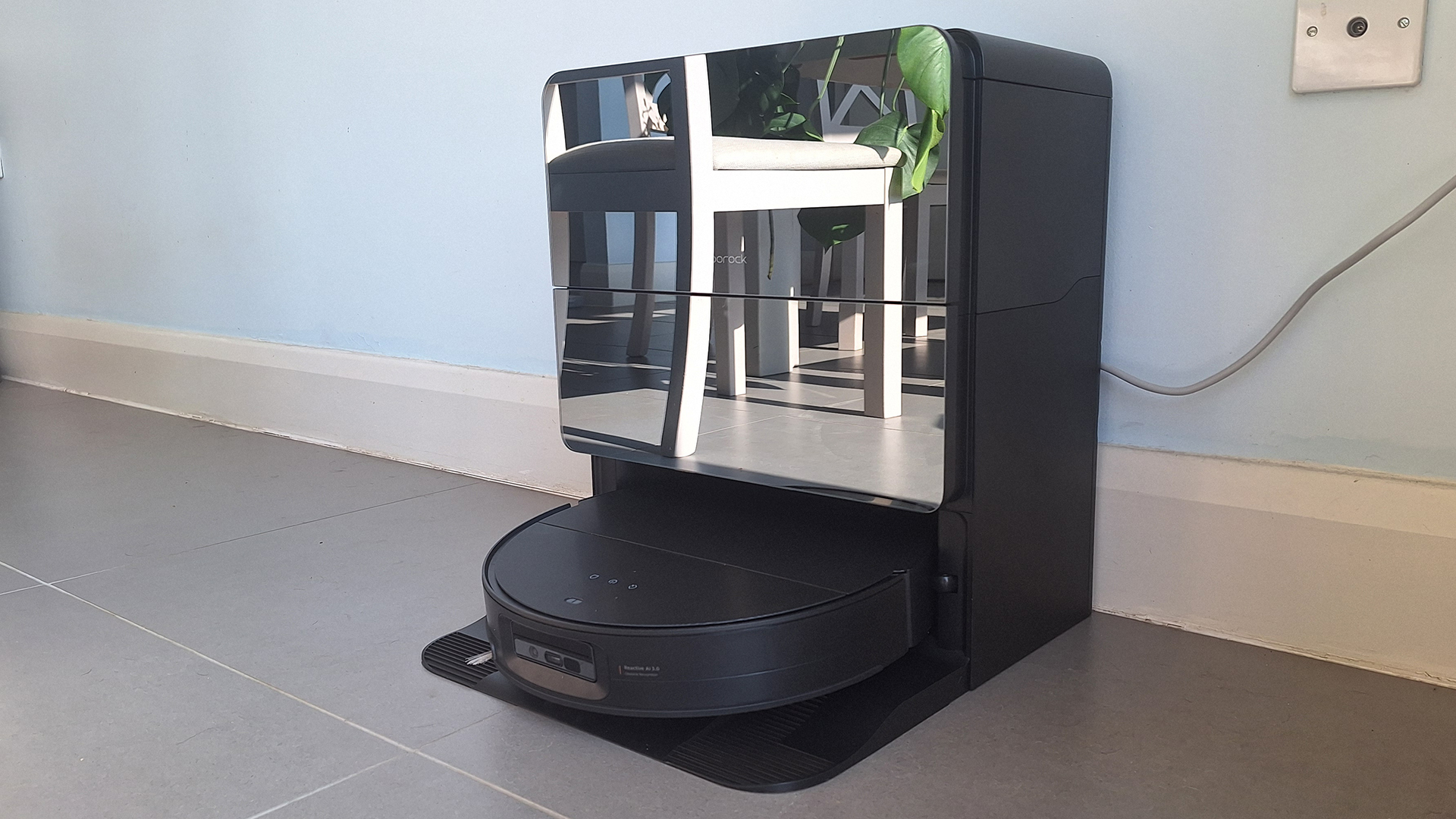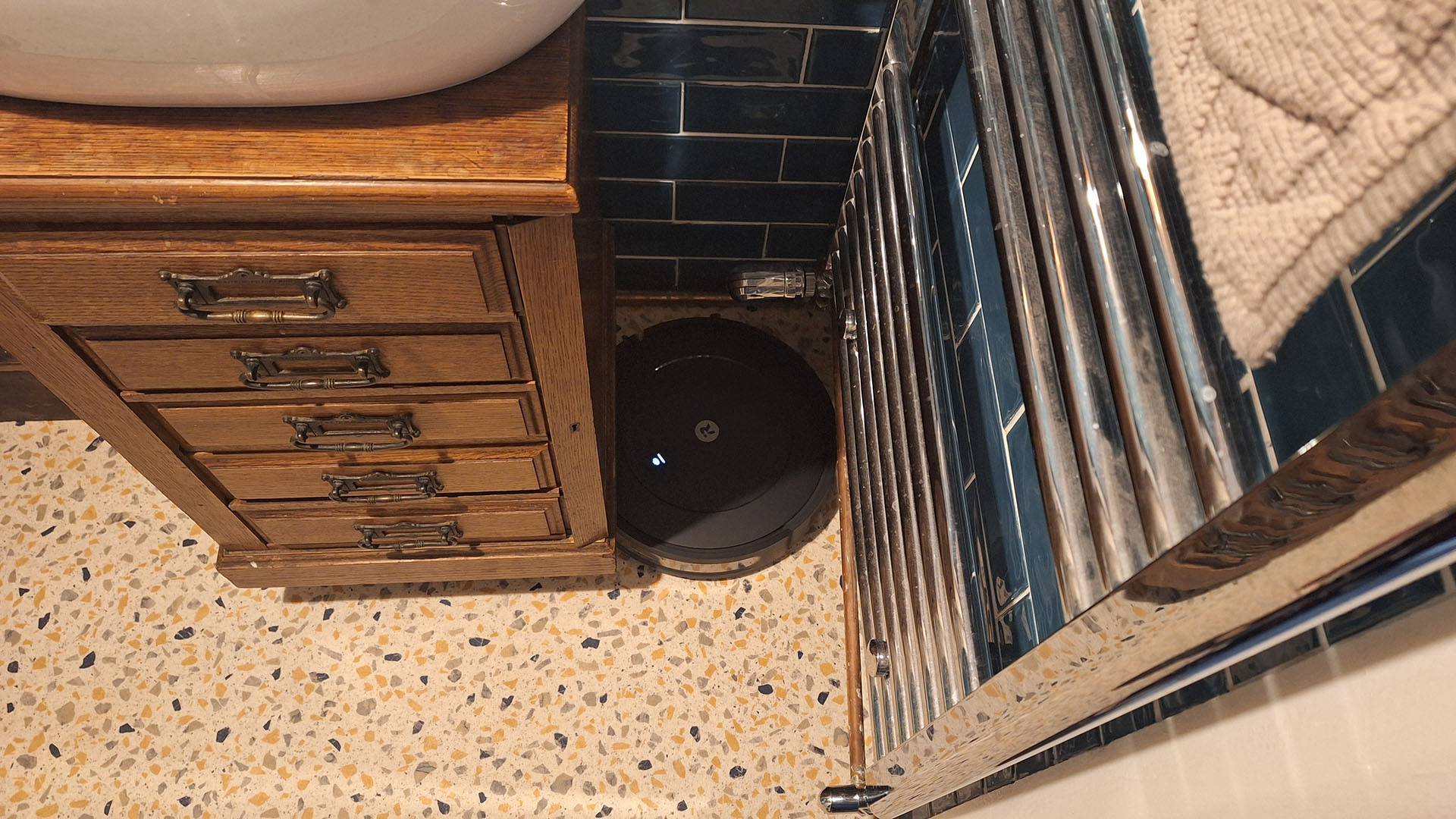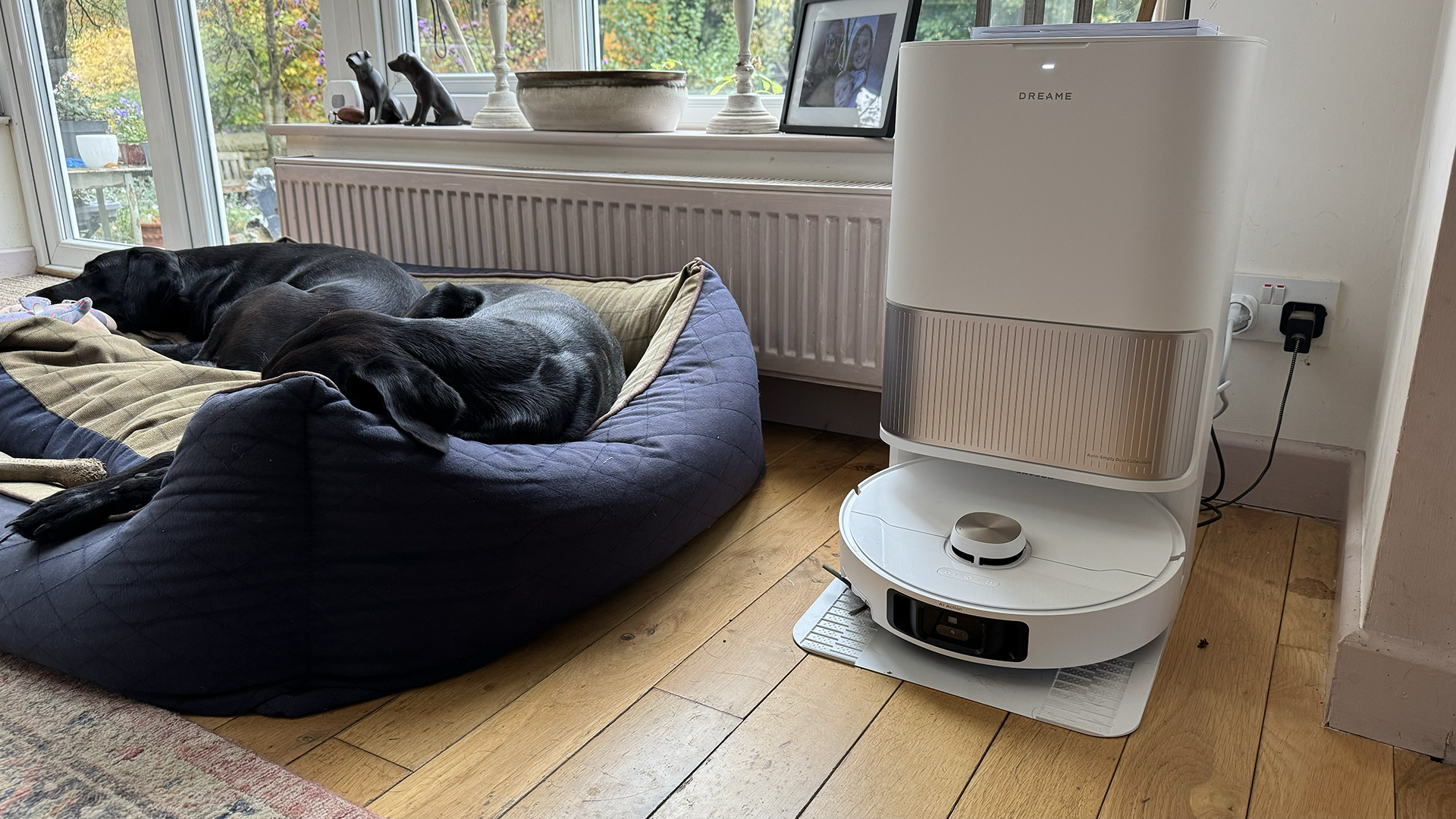7 things I wish I'd known before getting my first robot vacuum
In 14 months of testing robovacs, here are the most important things I've learned

When I started my role as Homes Editor at TechRadar, I was a robovac newbie. I'd never owned one, never used one, and actually never even seen one in action. Now, 14 months into the role, I've tested multiple models, ranging from the best robot vacuums money can buy, to cheap-and-cheerful bots with more limited features.
Below are the seven biggest lessons I've learned along the way. My hope is that my learnings will help other would-be robovac owners understand what to expect, and provide some guidance on what to look for.
1. The base station can't go just anywhere
The base station provides somewhere for the robot vacuum to dock and recharge, as well as (in some cases) empty its onboard dust cup or have its mop pads cleaned. It's worth planning where you're going to place your dock, because it can't go just anywhere.
You'll need a hard, flat floor, near to a free power outlet. There also needs to be a decent amount of space either side, as well as in front, so that the robot can confidently navigate back to its dock. How much varies by model, but generally manufacturers recommend around 1.5ft (0.5m) either side, and around 4 ft (1.2m) in front.

That's a not-insignificant amount of space, and can prove surprisingly limiting. For example, I'm not blessed with the largest kitchen, and that and the plug socket-free bathroom are the only hard-floor rooms in my home. There's actually only one place where my robot vacuums can live, and that's under my kitchen table.
My experience in testing is that this rule is a little flexible, and you can get away with leaving much less space around your robot vacuum dock. But if you decide to take the risk and end up with a bot that can't find its way home, I will not accept responsibility.
2. They CAN be used on multiple floors
Even the most advanced robot vacuums can't navigate a flight of stairs (although it's not for lack of effort from brands). I had initially assumed that meant a robovac would be confined to one storey only. That's not the case.
Sign up for breaking news, reviews, opinion, top tech deals, and more.
Almost all modern robot vacuums offer the option to create multiple maps, which means you can map several different floors and your bot will happily recognize and clean them for you. You'll just need to commit to carrying it up or down the stairs to your desired cleaning location, and once it's done, you'll need to escort it to its dock for recharging and – if you've gone for a self-empty option – emptying, too. That does limit what you can achieve remotely, but it's better than nothing.
Oh, and if anyone's still wondering – your robot will be smart enough not to fling itself down any stairs you might have. Robot vacuums come equipped with cliff sensors that warn them when they're nearing a steep drop.
3. Good navigation is vital
You might think that suction power is the most important thing, but I've decided it's actually navigation that's the make-or-break factor. I say this because I tested the now-discontinued iRobot Roomba Essential bot, which was powered by vSLAM rather than LiDAR, and it was an absolute nightmare. It couldn't even begin to find its way around my home, would regularly get stuck and not tell me, and once spent 20 minutes vacuuming to-and-fro in front of my fireplace before I noticed and instructed it to return to its base.
Luckily, this shouldn't be too much of an issue, because these days, almost all robot vacuums use LiDAR for navigation. In my testing it's always been reliable, even when the bot is a cheaper, more basic model (head to my Dreame D9 Max Gen 2 review for an example). However, it does make me a little wary of models like the new Roomba 205 DustCompactor Combo (currently being tested), which do away with the LiDAR navigation puck.

4. Bases can get BIG
Pay attention to the dock dimensions before hitting that buy button, because some of the newest models on the market have absolutely gargantuan docks, which you'll need to make room for (see point #1).
Generally speaking, the more things the dock can do, the bigger it'll be. The most basic options just charge your robovac, and are dinky enough to fit in any home. A level up is a self-empty dock that sucks the dust and debris out of the onboard dustbin and as such, needs to be bigger to include a larger, secondary dust cup. (In my opinion, it's generally worth making space for this, as I'll get onto in my next point.)

Where things really start getting unwieldy is when you add water tanks. A clean water tank is necessary if your bot has mopping capabilities and you don't want to have to refill the onboard water tank yourself. Some docks will also clean your mop pads for you, which requires a dirty water tank, and dispense detergent, which also requires a tank (although it will be much smaller).
These kinds of do-it-all-docks can be a big effort-saver if you're regularly using the mops (head to our Dreame L40 Ultra review for a closer look at the model pictured above). However, if you only need occasional mopping and/or are lacking in space, it might be worth going for something simpler.
5. ... but a self-empty base is worth it
The dustbins you'll find on robot vacuums are far smaller than you'd find on your average cordless stick vacuum. They need to be, to keep the overall size and weight down. If you opt for a model with a self-empty base, that won't matter, because the bot will dump everything from its bin every time it docks. However, if you go for a charge-only dock then you'll need to be prepared to empty it manually on a fairly regular basis.
If you have a larger home, lots of dust or shedding pets, then the hassle of emptying the bin might start to override the effort saved by going for a robotic vacuum in the first place. All the bots I recommend in my best robot vacuums for pet hair guide are self-empty models.
6. They're amazing for cleaning under things
One potential benefit I hadn't quite grasped is the ability of robot vacuums to easily clean under furniture. I suffer from a dust allergy, and my bot happily keeps the space under my bed clean and clear. That's an area that's almost always neglected if you're cleaning using a stick vacuum – even if you make the effort, and the floorhead is flexible enough to lie flat to the rest of the wand, it'll typically achieve a partial clean at best.
Robot vacuum makers are taking things a step further, and creating bots that can reach ever tighter spots. For example, both the Roborock Saros 10 and Dreame X50 Ultra (being tested) have navigation pucks that can retract when entering a low-height space, and the Roborock Saros 10R uses a new method of navigation that doesn't need a puck at all. All that means they're more likely to be able to clean in low-height spaces such as under your sofa.
I've done vacuum testing at the house of a friend with a cocker spaniel, and I've seen the volumes of hair that can build up beneath furniture, so features like this can be a real game-changer.
7. For maximum value for money, pick an older model
The newest flagship robot vacuums tend to come with price tags in the four figures, which is a lot for anyone to spend on an appliance, even an incredibly intelligent one. I am pleased to inform you that absolutely don't need the latest and greatest model to get something very capable and useful. The rate of meaningful progress has slowed, and robot vacuums that are a couple of years old tend to be plenty good enough for most people's needs.
Add to that the fact that is a hyper-competitive market and brands are releasing new models at an incredible rate, which means that even robovacs that have been only been out a year or so can commonly attract discounts as even never models succeed them. Take the Roborock Qrevo Master, for example. It came out in May 2024 and is an impressive and capable robot vacuum, but there are now several newer and higher-spec models available, so it's easy to snag a big discount on list price.
The one important caveat here is that I'd recommend sticking to trusted brands. Roborock, Dreame, Eufy and Narwal consistently perform well in our tests.
You might also like...

Ruth is TechRadar's Homes Editor specializing in air (vacuum cleaners, fans, air purifiers), and hair (hair dryers, straighteners and stylers). She has been in consumer journalism since 2020, reviewing and writing about everything from outdoor kit to mattresses and wellness gadgets, with stints on Tom's Guide and T3.
You must confirm your public display name before commenting
Please logout and then login again, you will then be prompted to enter your display name.